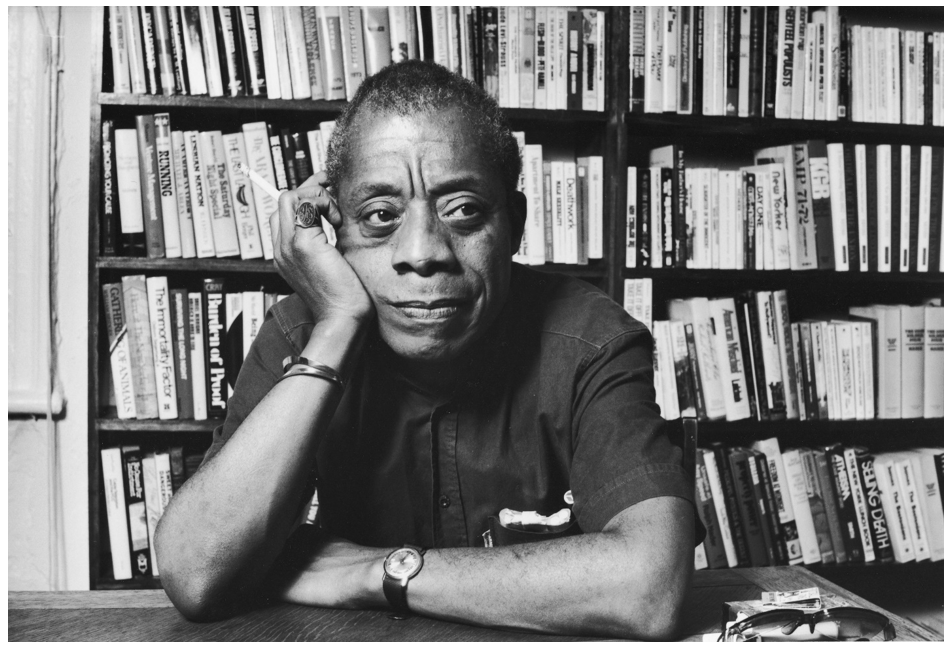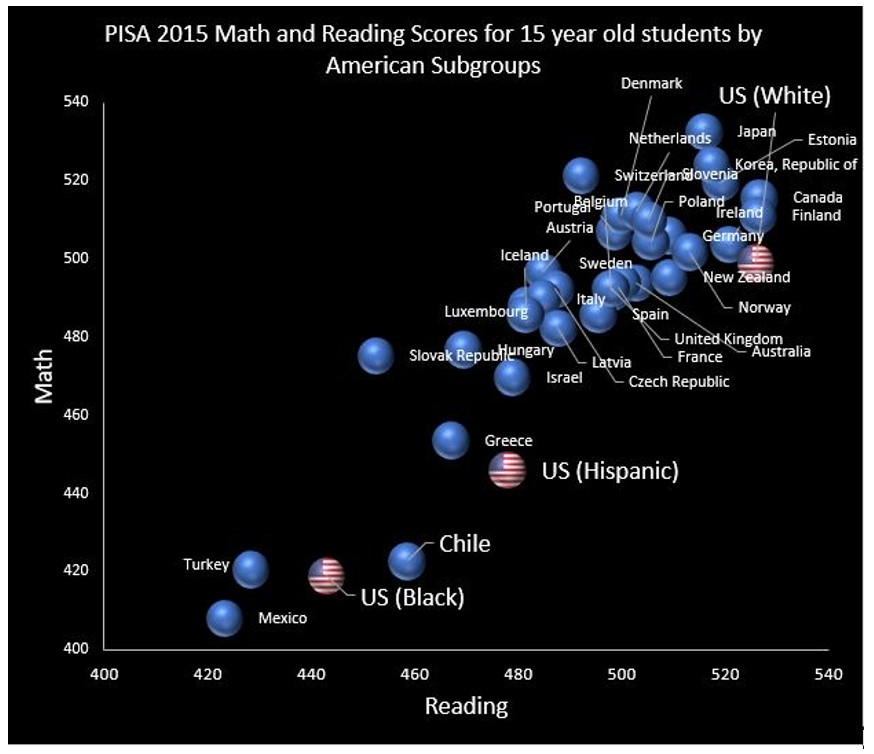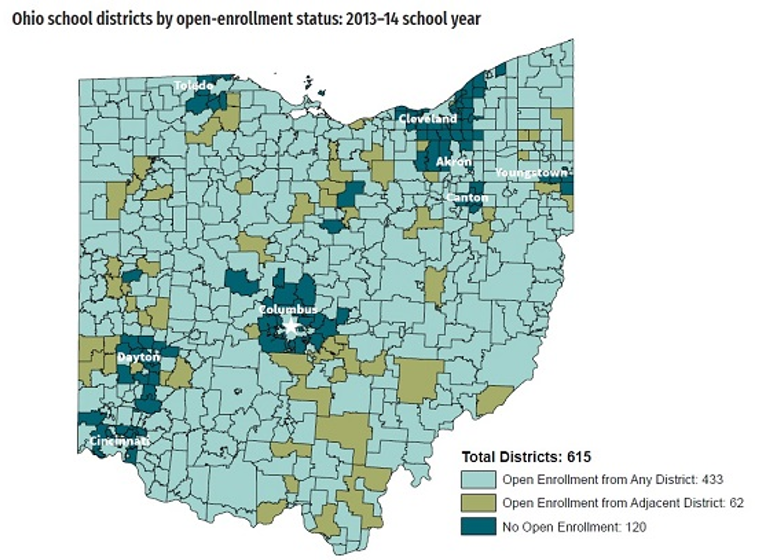
“You were born where you were born and faced the future you faced because you were black and for no other reason,” James Baldwin wrote to his nephew James in 1962.
“The limits to your ambition were thus expected to be settled. You were born into a society which spelled out with brutal clarity and in as many ways as possible that you were a worthless human being. You were not expected to aspire to excellence. You were expected to make peace with mediocrity. Wherever you have turned, James, in your short time on this earth you have been told where you could go and what you could do and how you could do it, where you could live and whom you could marry.”
Nearly 58 years have passed since Baldwin wrote those words. How much has changed?
Are Black students still “not expected to aspire to excellence” and to “make peace with mediocrity?” Look at the PISA math and reading exam results and judge for yourself:

Are people still telling Black students “where you could go and what you could do?” Ask Kelly William-Bolar, a Black mom who spent time in jail for sending her children to a better-performing public school in Ohio. Read the Newsday investigation regarding the continuing role of race, income and real estate in segregating families by school.
Or look at the report published by the Fordham Institute on interdistrict open enrollment in Ohio, a first-of-its-kind analysis conducted by researchers at Ohio State University and the University of Oklahoma. See any suburban districts volunteering to take urban kids through open enrollment transfers?

Me neither, which leads inevitably to the conclusion that Kelly William-Bolar’s case was anything but a fluke, that those lines were working exactly as intended, and still do today.
Hundreds of thousands of students, many of them students of color, sit on private choice and charter waitlists. Anti-choice interests not only shamelessly do whatever they can to keep those families waiting, but they also sometimes mumble about segregation in a theoretical fashion, attempting to justify their actions. The gigantic and all-too-real sort of segregation on display in the map above does not ever seem to merit their attention.
“The purpose of education,” Baldwin wrote “…is to create in a person the ability to look at the world for himself, to make his own decisions.”
The time is long past for families to make their own decisions about where and how their children will be educated.


